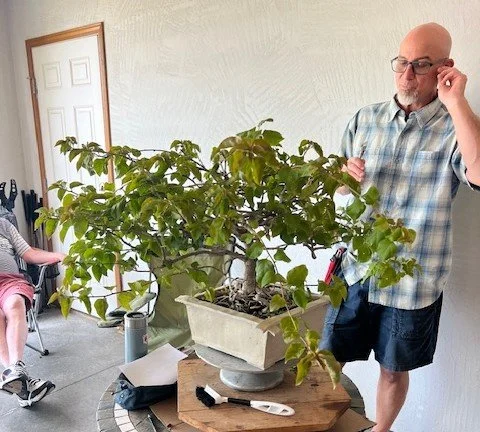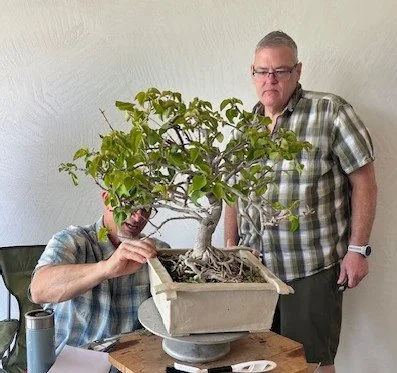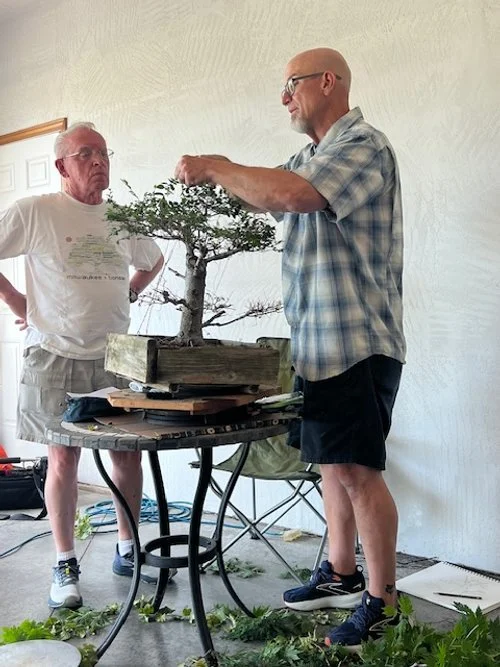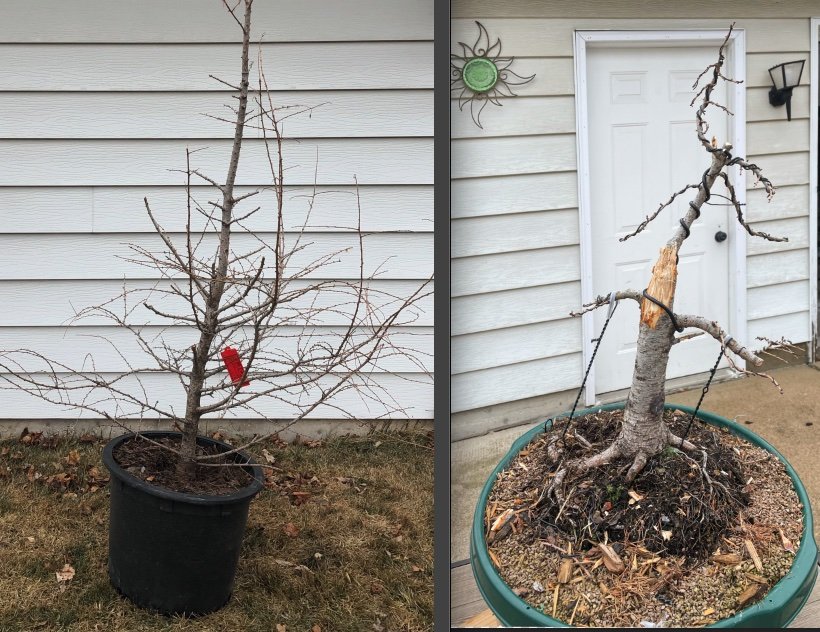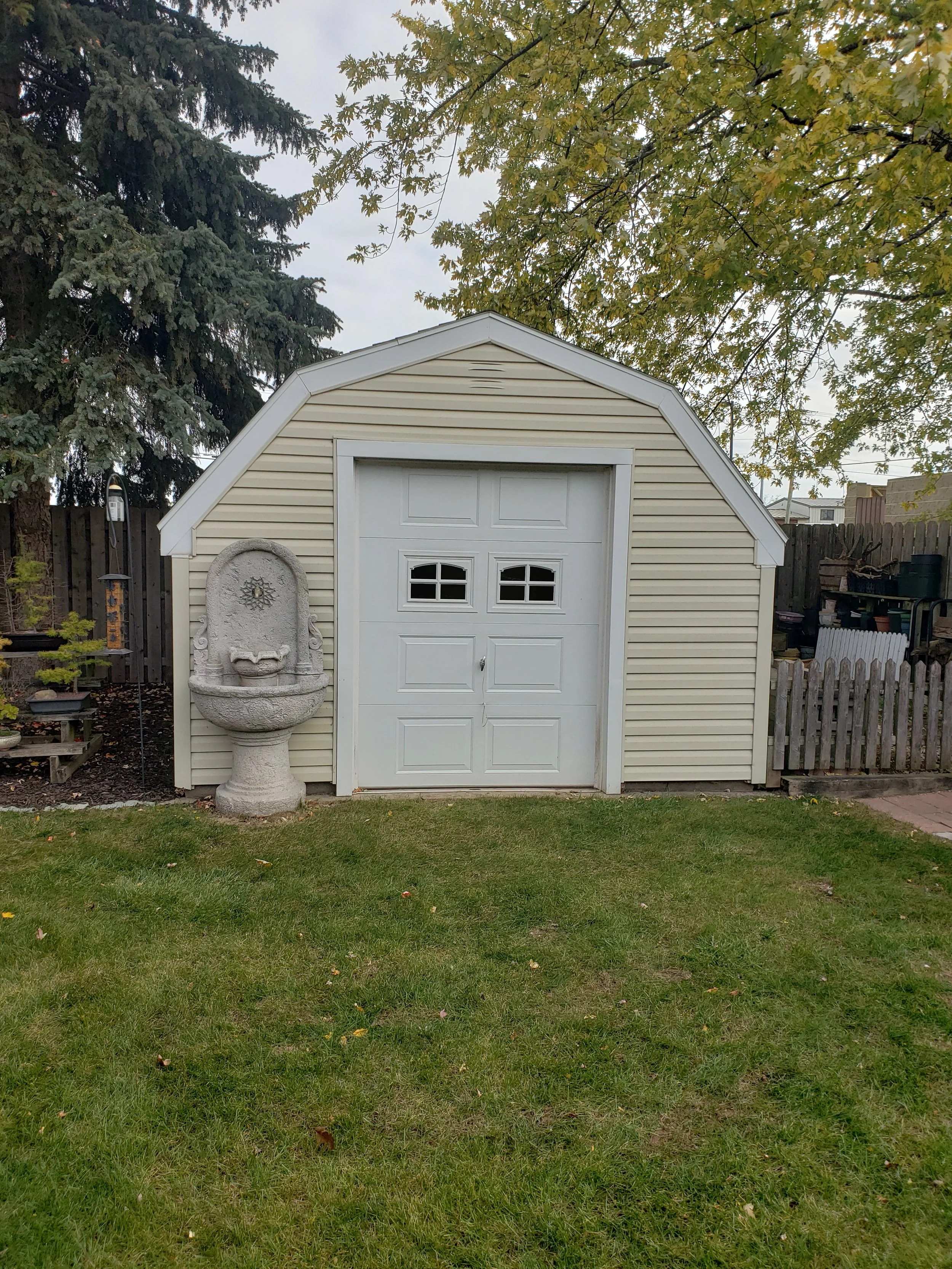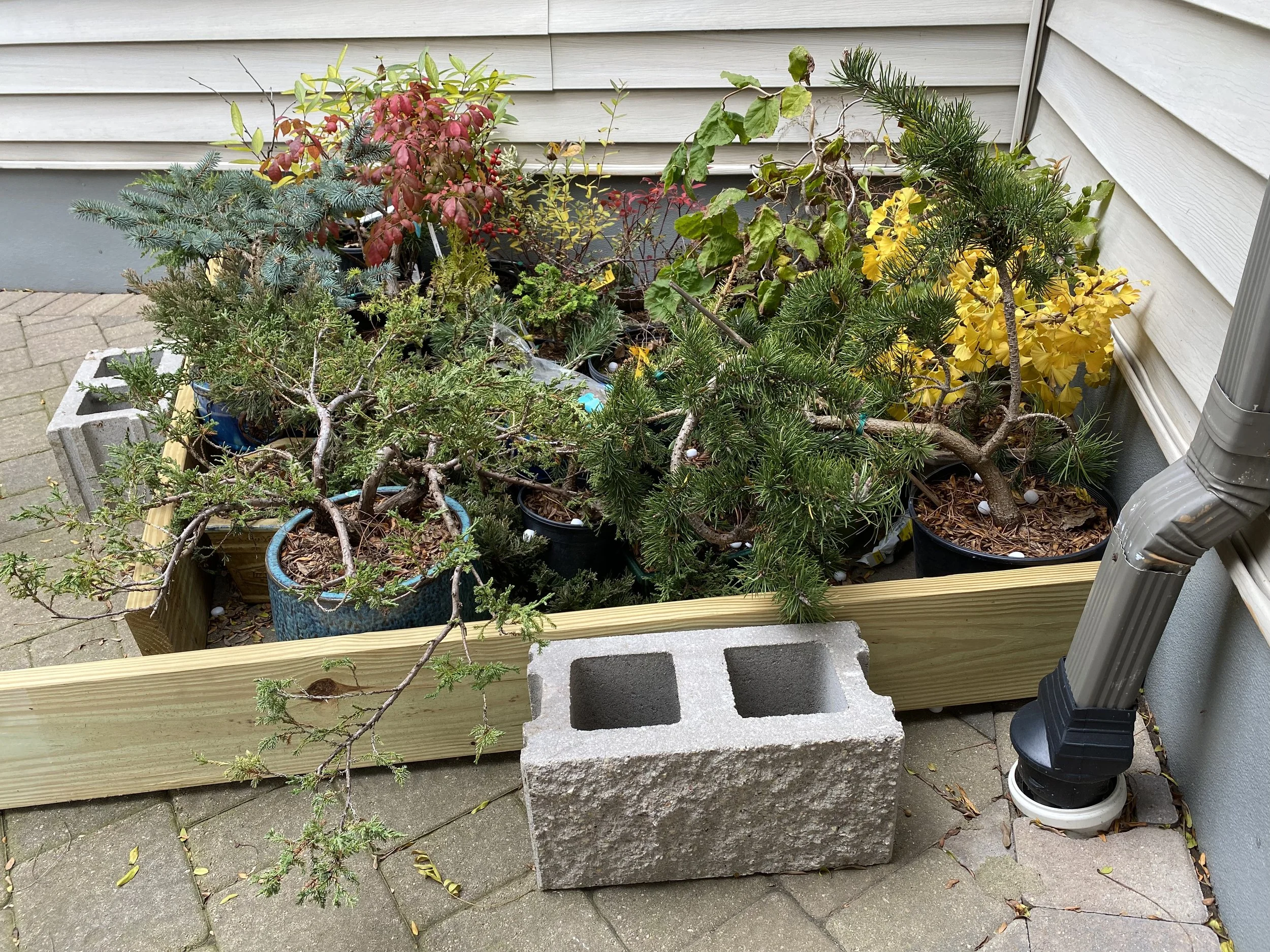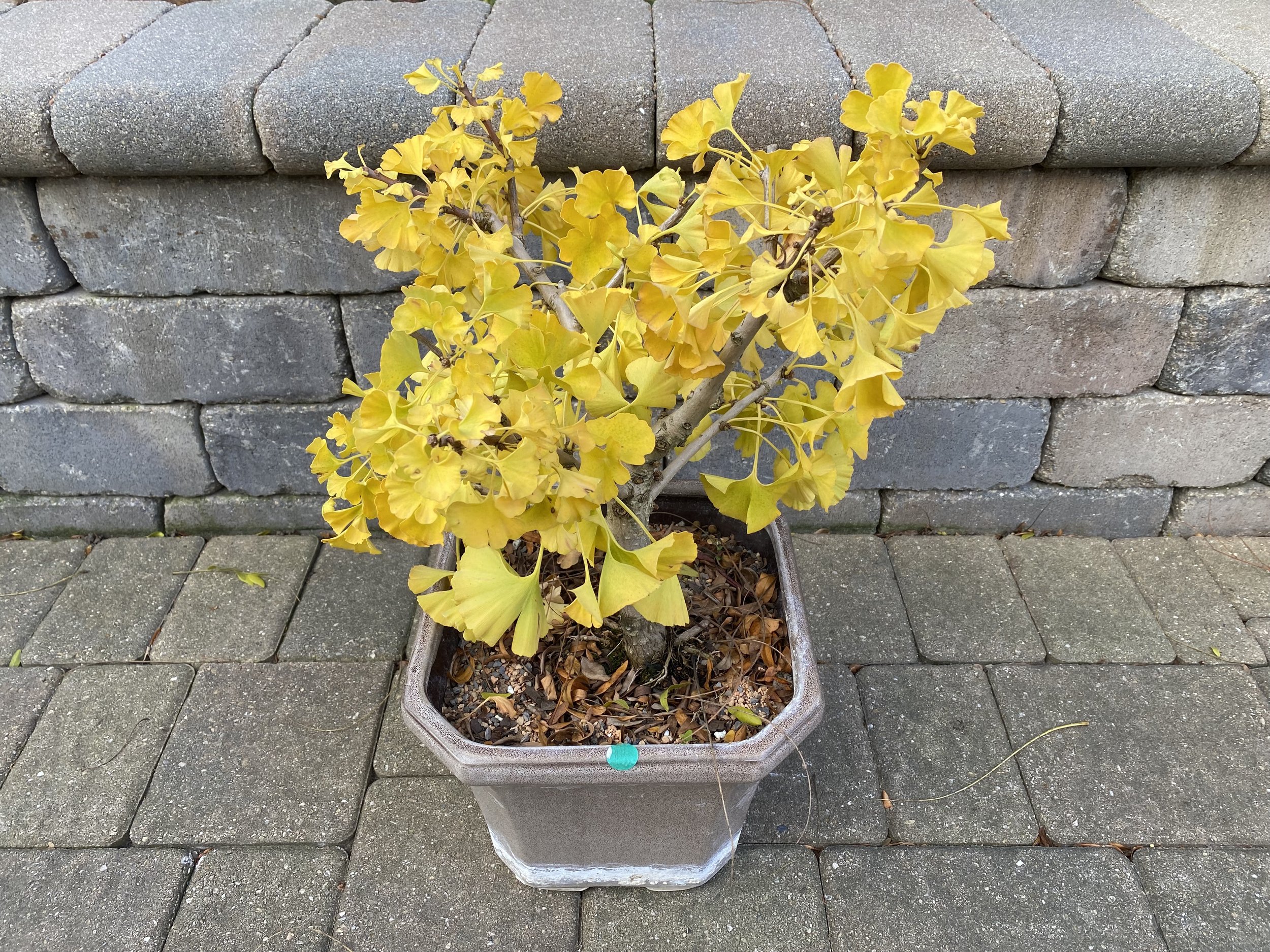
Member Projects
Above Gingko biloba 'Mariken' shows bonsai in pots should have similar seasons to what they would have when planted in the ground.
Below are examples of club member projects.
Submit your photo and news ideas to jmj0629@gmail.com
Chris Baker Workshop
On July 26th our club hosted a workshop with Chris Baker. Chris is the curator of the bonsai collection at the Chicago Botanical Garden. He was a fountain of knowledge with clear explanations that catered to our members’ needs regardless of level. Each member brought trees for Chris to evaluate and make suggestions for improvement. After working on the tree, we had time for another round after lunch where the same tree could be commented on, or another tree could be presented. Members found this extremely valuable. Hopefully, we can bring Chris back next spring when the time of year is appropriate for work on more species of trees. Here are some pictures of members trees:
Mitch styles a half dead $20 larch closer to a finished bonsai in two years
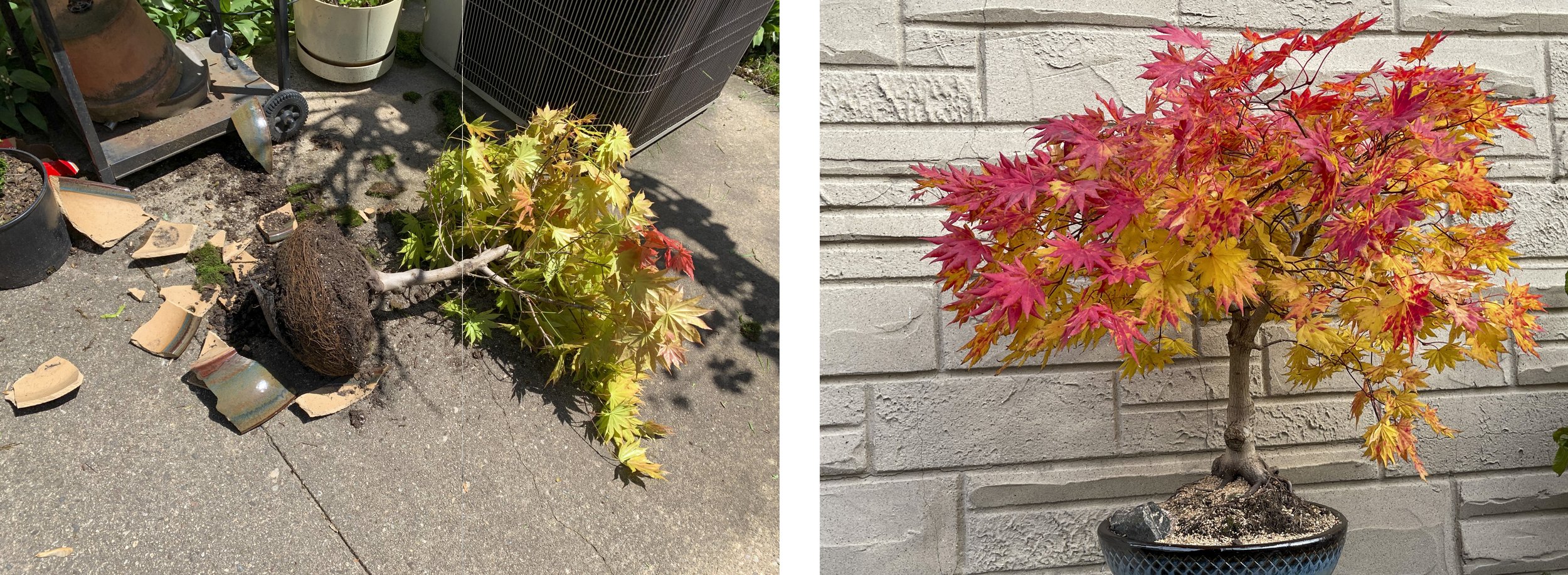
Tom Eggert’s maple has recovered nicely from a nasty tumble a year ago
‘Winterizing’ can begin as early as late September for tender tropicals who resent night time temperatures dropping below 50F or 60F depending on the species. These must be cleaned up, trimmed (so plant does not need to support so much foliage in shorter/darker winter months) and often sprayed for pests. How to and when to winterize hardy plants depends greatly on the situation. Some plants, such as zone 2, might be able to take a winter in the open on a concrete surface (though this is not recommended, at least cover it with muslin to avoid desiccation). Some plants, such as for zones 4-6, may require wintering in an unheated garage where temperatures seldom go below zero. While they may not need light, they might need to be monitored for moisture. Zone 7-10 plants are very difficult as they require a ‘cool’ (but not freezing) greenhouse. Everything else, is ‘it depends on the species and your situation’ how they are wintered outdoors. Water (from the sky as rain and snow), possible dessication or rot, rabbits, mice and other factors must be considered.
Nigel Saunders of the Bonsai Zone (similar agricultural zone as us in Toronto) shows us how to do this every fall, including his latest episode ‘Getting Ready for Winter, October 31. https://www.youtube.com/watch?v=MQnMuHThf-I
Club member Mitch Reynebeau shows below how he does it by fencing off the side of his house as shown below. Winterizing ‘how to’s’ by club members Donald LaCount, Dennis Dahlstrom and David Roisum follows.

Winterizing by Mitch Reynebeau
I usually water my trees really heavy in mid to late November before I put them away for the winter and will add snow over my trees 2-3 times during the winter months. My tropical trees I take in my basement under grow lights and water them approximately every two weeks throughout the winter and they bloom even in the basement.
In my outdoor storage shed I usually have between 100 to 150 hardy trees I put in storage for the winter and have very minimal amount of trees that don’t survive the winter months.
- Donald F, LaCount
This box for deciduous trees was originally used outside and has 1/4” hardware cloth on all six sides. The “open” (only hardwares cloth) on the top and bottom allows snow/rain to enter from the top and excess moisture to drain below. As I place them in, I pack dry peat moss around and over the pots/rootballs. Then I water everything heavily. I now keep this box in my third stall garage, which is not heated or insulated so eventually it all freezes into one big chunk of ice. This protects the trees from freezing and thawing during the winter. Some years there is still ice in there when it is time to take them out, but getting them out has not been a problem. When I used this box outside in the past I packed oak leaves around the pots instead of peat moss.
Evergreen trees are stored in deep plastic boxes. They are not ready yet to be put away for the winter. They are still outside… soaking up all the sunshine they can get. Once their rootballs are frozen I will put them in these plastic containers and pack the spaces between them with dry peat moss. Then I will water everything well and place them on extra high sawhorses I made so they can get as much sun as possible from the only window, which faces southeast. If my wooden sided storage box that I use now for my deciduous trees, was still being used outside it would also work well for evergreens as the “open” top would allow them to get sunlight. - Dennis Dahlstrom
My 50 tropicals are moved into the conservatory in mid-September after a trim and delousing. Most of my 50 or so hardy species winter on a protected SE facing corner of the house in late October. Note the dwarf burning bush and gingko showing their fall finery. Mothballs and mouse poison are used for pest control. A bit later, I will backfill the spaces with tiny leaves and needles and cover the conifers with shade cloth. The entire assembly will be covered with chicken wire to keep rabbits out. Since it is outside, no watering should be needed.
- David R Roisum
Pinus mugo 'jacobsen'
Member David Roisum purchased this tree from a local nursery in 2020, styled it and put it in an inexpensive antique store pot. In 2021 it was restyled based on expert advise from senior club members.


